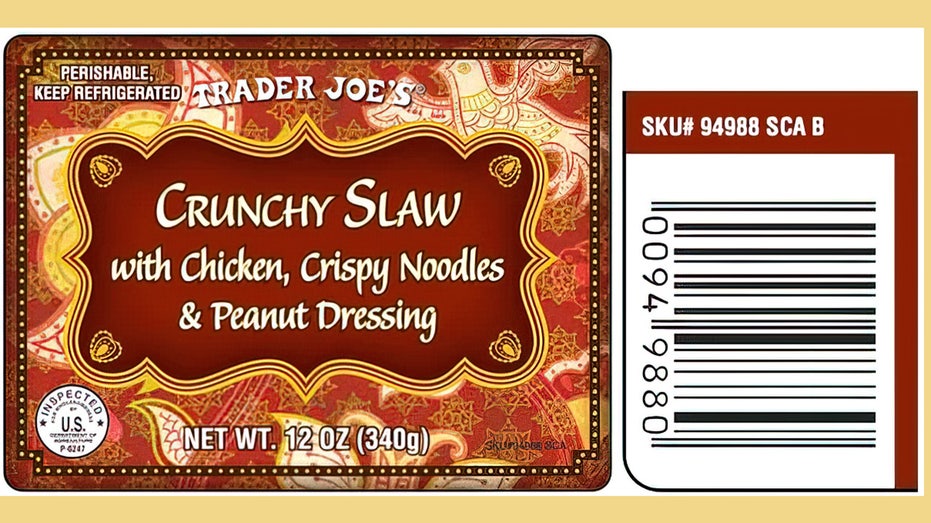Our goal here at Credible Operations, Inc., NMLS Number 1681276, referred to as “Credible” below, is to give you the tools and confidence you need to improve your finances. Although we do promote products from our partner lenders who compensate us for our services, all opinions are our own.

If you don’t have enough home equity to qualify for a conventional refinance, a cash-in refinance may still be an option. (Shutterstock)
When interest rates are low, you may be thinking about refinancing your home mortgage. Refinancing can lower your monthly payments or help you save on interest over the life of the loan.
But lenders typically will only allow borrowers to refinance with a certain amount of home equity. You may not have enough equity if you put down a small down payment or haven’t had your mortgage for long.
A cash-in refinance can allow you to qualify for refinancing, help you put more money into your home, and build up equity quickly.
If you’re considering refinancing your mortgage, it’s a good idea to compare rates from multiple lenders. With Credible, you can see personalized rates in minutes.
What’s a cash-in refinance and how does it work?
Making a large lump-sum payment toward your mortgage typically won’t lower your monthly payment or interest rate — although it could help reduce your total interest costs over the life of your loan.
But a cash-in refinance is a type of mortgage refinancing where you make a lump-sum payment toward your loan during the refinancing process. As a result, you replace your current mortgage with one that has a smaller principal balance.
One of the primary motivations for a cash-in refinance is to meet your lender’s loan-to-value (LTV) requirements for refinancing. Many lenders require you to have at least 20% equity in your home before you can refinance. And lenders that do allow refinances with less than 20% equity may charge you a higher interest rate or require mortgage insurance.
A cash-in refinance lets you refinance before you reach 20% equity because the lump sum you pay during the refi makes up for the lack of equity.
For example, say your home is currently worth $300,000, and you have a $270,000 balance on your mortgage. This means you have an LTV ratio of 90% and 10% equity in your home. As a result, you might have difficulty finding a lender willing to let you refinance at a competitive rate.
However, if you can do a cash-in refinance and pay $30,000 upfront to lower your loan’s principal balance to $240,000, your LTV ratio will be 80%, and you’ll have 20% equity in your home. This could make lenders more willing to work with you and offer you better rates and terms.
Cash-in refinance vs. cash-out refinance
A cash-in refinance is essentially the opposite of a cash-out refinance, in which you take equity out of your home during the refinance process and wind up with a larger loan amount on your new loan.
Cash-out refinancing is generally used by people who have a lot of equity in their home and want to use some of it for home improvements or other purposes.
Simply put: With a cash-in refinance, you come to the closing with a check, whereas with a cash-out refinance, you walk away with a check (or have the funds deposited directly into your bank account after closing).
Where to get a cash-in refinance
Many lenders that offer traditional mortgages also offer cash-in refinances. You just might not see them advertised often because they’re not as common as traditional refinance loans or cash-out refis. So call your existing lender, bank, or credit union to find out whether they offer this option.
As with any loan or credit product, it’s crucial to shop around. Not all home loans are created equal. The mortgage interest rate, fees, length, and other terms can vary from lender to lender. Seemingly minor differences between the rate or other terms of a mortgage can drastically impact the amount you’ll pay over the life of your loan, so get quotes from several lenders to find your best deal.
Credible makes it easy to compare mortgage refinance rates from multiple lenders, without affecting your credit.
Why consider a cash-in refinance?
You may want to consider a cash-in refinance for several reasons. Here are some common ones:
- You don’t have sufficient equity for a traditional refi but still want to take advantage of a lower interest rate. If interest rates have dropped or your credit score has improved since you took out your existing mortgage, you may be able to get a lower rate by refinancing. But having less than 20% equity in your home can limit your refinancing options. A cash-in refinance may allow you to qualify for refinancing and take advantage of lower interest rates.
- You want to reduce your mortgage principal while getting a better rate. Does looking at your mortgage’s principal balance get you down? Maybe you want to get rid of mortgage insurance faster or get closer to being debt-free. A cash-in refinance lets you make a lump-sum payment toward your mortgage’s principal balance while also refinancing into a lower interest rate.
- You want to shorten your repayment term while getting a better rate. A cash-in refi can also allow you to switch from a 30-year mortgage to a 15-year mortgage. Shortening your loan term can help you qualify for a lower interest rate compared to a mortgage with a longer term. It can also help you save thousands of dollars in interest by paying off your mortgage sooner.
- You want to switch from an adjustable-rate to a fixed-rate mortgage. Maybe you selected an adjustable-rate mortgage (ARM) when you purchased your home, thinking you’d sell the property before interest rates went up, but have since decided to stay in the home. A cash-in refi is one option for refinancing into a new mortgage at a fixed rate, so you know what your monthly mortgage payment will be for the life of your loan.
How much does a cash-in refinance cost?
Any time you refinance your loan, there are expenses involved. So it’s essential to understand those costs and consider the total cost of refinancing — not just lowering your annual percentage rate (APR). Those costs can include:
- Closing costs — Closing costs vary from lender to lender, loan to loan, and location to location. The average closing costs on a refinance are approximately $5,000, according to Freddie Mac. These costs can include a loan origination fee, government recording costs, appraisal fees, credit report fees, title services, attorney fees, and more. In a traditional or cash-out refinance, you may be able to finance closing costs into your new loan. But this isn’t usually feasible with a cash-in refinance.
- Lump-sum amount — In addition to closing costs, you need to come up with a lump-sum amount to pay toward your mortgage balance. The size of your lump-sum payment depends on the amount of equity you currently have in your mortgage and your goals for refinancing.
Also, consider how much you’ll have to pay to access the cash to complete the cash-in refinance. If you inherited the money or received a large bonus from work, there may not be other costs involved. But if you plan on selling stocks to cover the lump sum and closing costs, you may have to pay capital gains tax on the sale.
Another potential cost is the opportunity cost. If you’re paying down your mortgage principal by tens of thousands of dollars, how much of a return could you get on that money if you invested it elsewhere? You may be able to generate more returns from investing the money than you’ll save by refinancing.
Pros and cons of a cash-in refinance
A cash-in refinance can be expensive, so ensuring that the benefits outweigh the costs is crucial. Here are some pros and cons to consider:
Pros of a cash-in refinance
- Lower your LTV ratio. Your loan-to-value ratio is the percentage of your loan balance compared to the market value of your home. A lower LTV is less risky to lenders, so the lower your LTV the more likely lenders are to offer you a low interest rate.
- Eliminate mortgage insurance payments. Lenders usually require you to pay private mortgage insurance (PMI) if your down payment is less than 20% of the home’s purchase price. You can generally ask your lender to cancel PMI once you’ve paid down the mortgage balance to 80% of your home’s original appraised value. But a cash-in refinance may allow you to get rid of PMI sooner.
- Lower your monthly payments. Refinancing into a new loan with the same term but a lower interest rate and lower principal balance can reduce your monthly mortgage payment. This frees up some of your monthly budget for other financial goals, such as paying down debt or saving for retirement.
Cons of a cash-in refinance
- You’ll pay refinancing costs. In addition to making a lump-sum payment toward the principal, you have to come up with closing costs for the refinance. If you’re not planning on staying in your home for several more years, paying to refinance your loan might not make sense. To figure out whether refinancing is a good idea, calculate how many months it’ll take to recoup those closing costs. If you don’t plan on staying in your home that long, refinancing might not make sense.
- You’ll tie up your cash. Making a large lump-sum payment toward your mortgage means tying your money up in an asset that isn’t very liquid: your home. If you later face financial hardship or need cash for another purpose, you’ll either need to sell your home or refinance again to take some money out. Before putting all your money into a cash-in refinance, ensure that you have a fully funded emergency fund.
- You could face prepayment penalties. Some mortgages come with a prepayment penalty: a fee the lender charges if you pay off your mortgage ahead of schedule. Not all mortgage lenders charge prepayment penalties, and most only apply to the first three to five years of your loan. Still, it’s worth reviewing the closing paperwork for your existing mortgage to ensure you won’t get hit with an unexpected penalty if you refinance your loan.
It’s a good idea to look at mortgage refinance quotes from multiple lenders, and compare APRs, which represent interest rates and fees. Credible makes it easy to compare mortgage refinance offers from multiple lenders.
Other types of mortgage refinancing
If a cash-in refinance isn’t right for you, consider these other refinance options:
- Rate-and-term refinance — A rate-and-term refinance, also known as a traditional refinance, lets you refinance into a new conventional loan with a new interest rate and loan term without changing your principal balance.
- Cash-out refinance — A cash-out refinance replaces your existing home loan with a larger mortgage, allowing you to cash out some of the equity you’ve built up in your home.
- FHA streamline refinance — An FHA streamline refinance allows you to refinance your existing FHA loan into a new FHA loan. This option usually requires less paperwork and no appraisal, saving you time and money.
- VA cash-out or USDA refinance — If you have an existing VA or USDA loan, you may be able to refinance them into new government-backed loans. While you can take cash out with a VA refinance, the USDA doesn’t do cash-out refinancing.
- Mortgage recast — A mortgage recast isn’t a refinance. Instead, you make a lump-sum payment toward your existing mortgage and your lender calculates a new monthly payment based on your reduced principal balance. This can help you avoid most closing costs — other than an administrative fee charged by the lender — and lower your monthly payments. However, the loan term and interest rate will stay the same.


